Physical Address
304 North Cardinal St.
Dorchester Center, MA 02124
Physical Address
304 North Cardinal St.
Dorchester Center, MA 02124
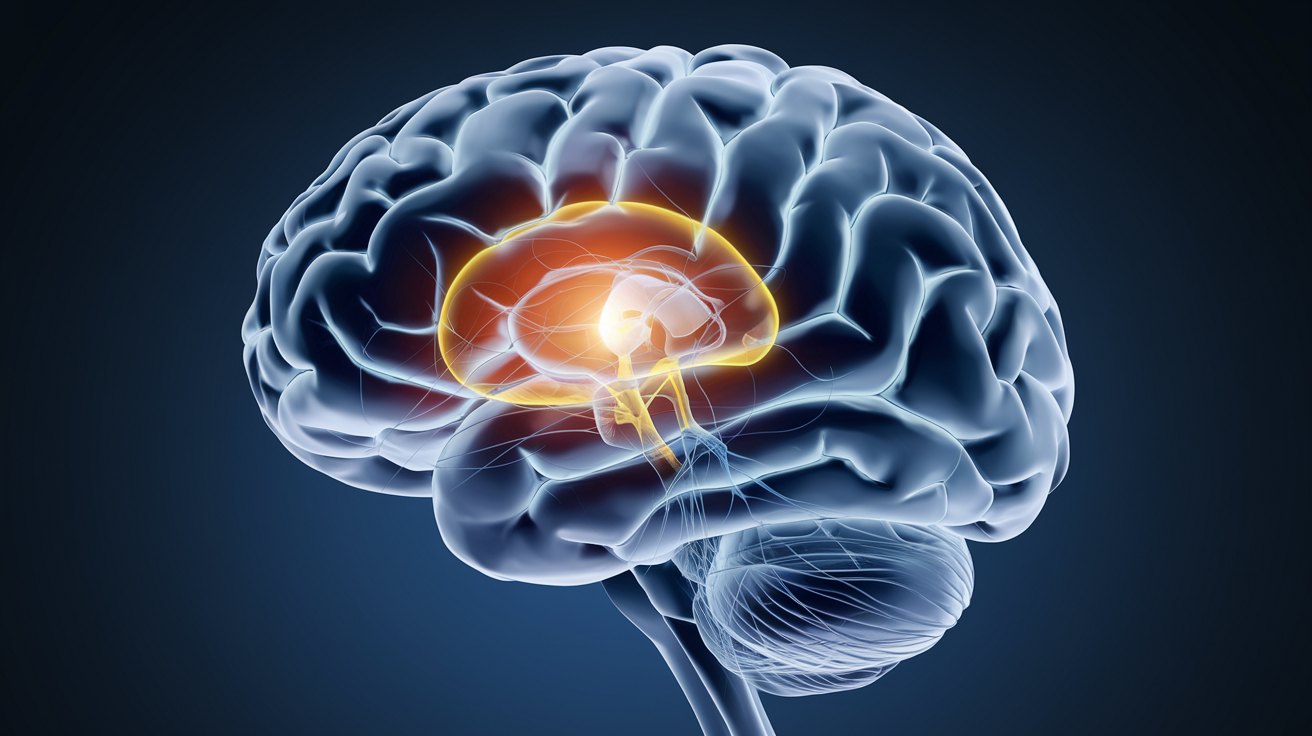

Consciousness is one of the most enigmatic and complex phenomena that neuroscientists and philosophers continue to explore. It encompasses awareness, perception, cognition, and the ability to reflect on one’s experiences. While the exact definition of consciousness can vary, the central question remains the same: which region of the brain is necessary for consciousness? This question has fascinated researchers for decades and has led to significant discoveries in understanding how different parts of the brain work together to generate conscious awareness.
The pursuit of understanding consciousness has revealed that it is not localized in one particular region of the brain. Instead, it is the result of complex interactions between multiple brain regions, each contributing to various aspects of our conscious experience. Key players in this intricate process include the cerebral cortex, thalamus, and brainstem. Through bidirectional neural connections, these regions allow us to perceive the world, process information, and maintain a sense of self.
This article will provide a detailed overview of which region of the brain is necessary for consciousness, the importance of neural networks, and how disruptions in brain function can alter or impair consciousness. We’ll also discuss the fascinating recovery potential of the brain, common challenges in the study of consciousness, and some of the latest research findings.
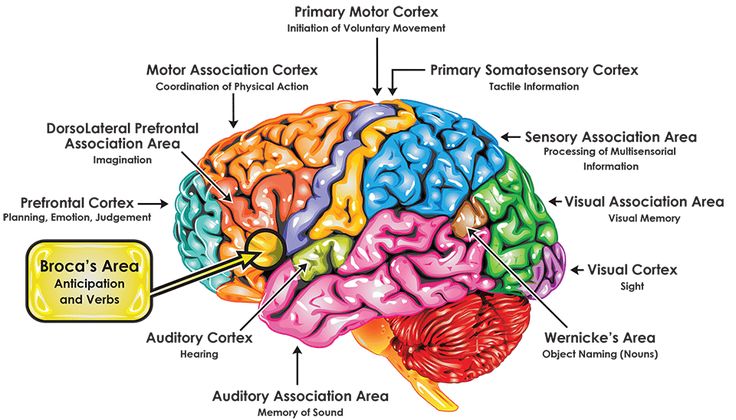
The central question, which region of the brain is necessary for consciousness?, does not have a straightforward answer, as consciousness is not produced by a single area. Instead, it arises from the interaction of multiple brain regions. Some of the most critical areas include:
These three regions form the foundational network necessary for consciousness. Their complex interactions allow us to experience our surroundings, reflect on our actions, and engage with the world.
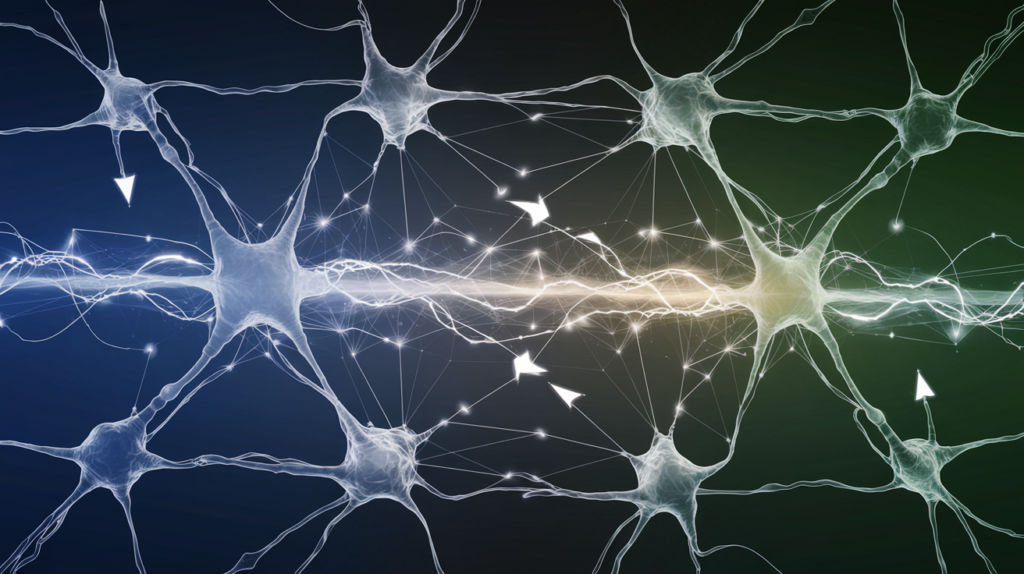
One of the most crucial aspects of consciousness is the bidirectional neural connections between brain regions. Communication between these areas is essential for integrating sensory input, processing it, and forming a coherent conscious experience. These connections are particularly evident in the cortico-thalamic loops, which highlight the importance of the feedback loops between the cortex and thalamus.
In these loops, sensory information is first processed by the thalamus before being sent to the cortex. The cortex then further refines this information and sends feedback to the thalamus. This continuous exchange allows for the seamless transition of information, helping to maintain consciousness and prevent disruptions in awareness.
When these bidirectional connections are damaged or severed, consciousness can be impaired. For example, damage to these pathways due to stroke, trauma, or neurodegenerative diseases can result in states of reduced awareness, such as comas or vegetative states.
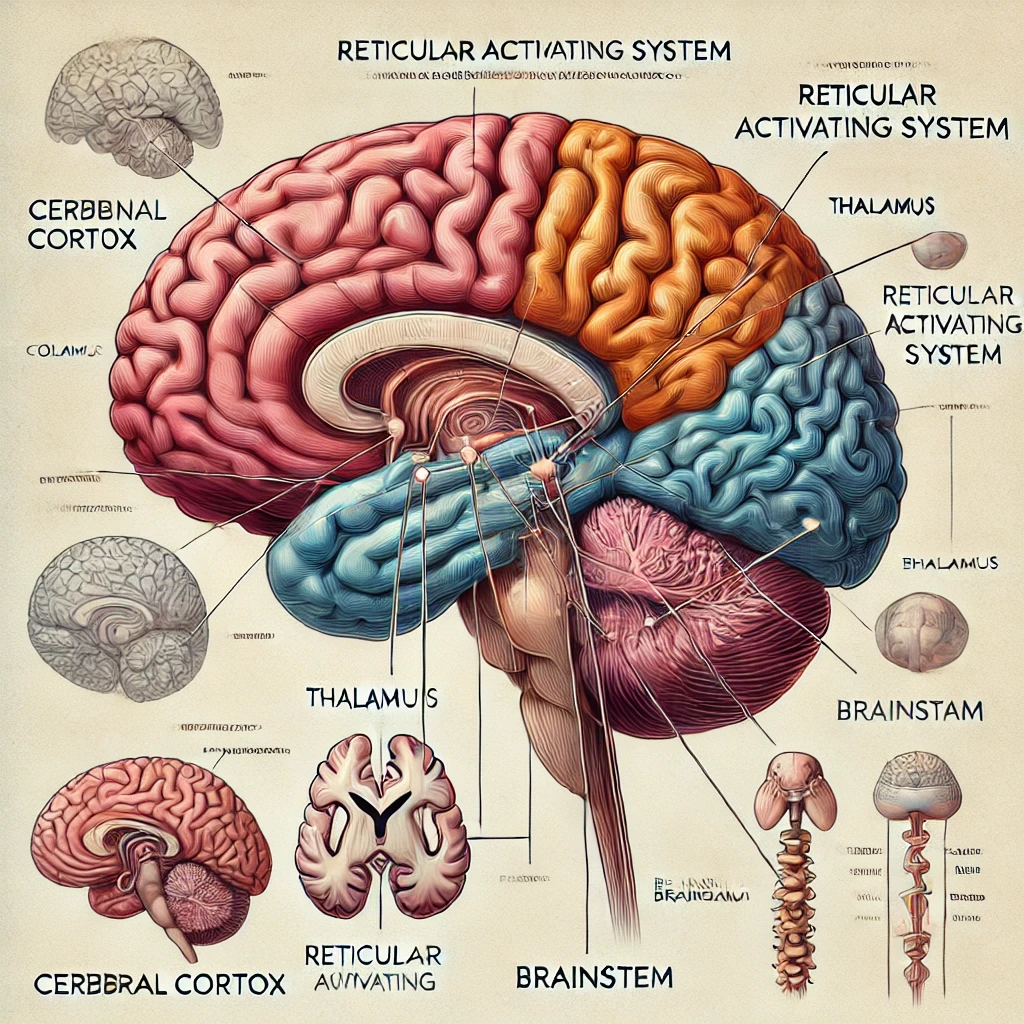
The reticular activating system (RAS) in the brainstem plays a critical role in controlling consciousness, specifically in regulating wakefulness and alertness. This system interacts with other regions, such as the hypothalamus and thalamus, to ensure that the brain remains aroused and responsive to stimuli during waking hours.
However, higher-level conscious thought requires the involvement of the cerebral cortex, particularly the prefrontal cortex. This area is responsible for complex cognitive tasks, including reasoning, decision-making, and planning. It is in this part of the brain that our sense of self-awareness is most strongly rooted.
Without the proper functioning of both the brainstem and cortex, consciousness would be disrupted. The RAS acts as a foundational mechanism to keep the brain awake and alert, while the cortex allows for higher-order conscious thought.
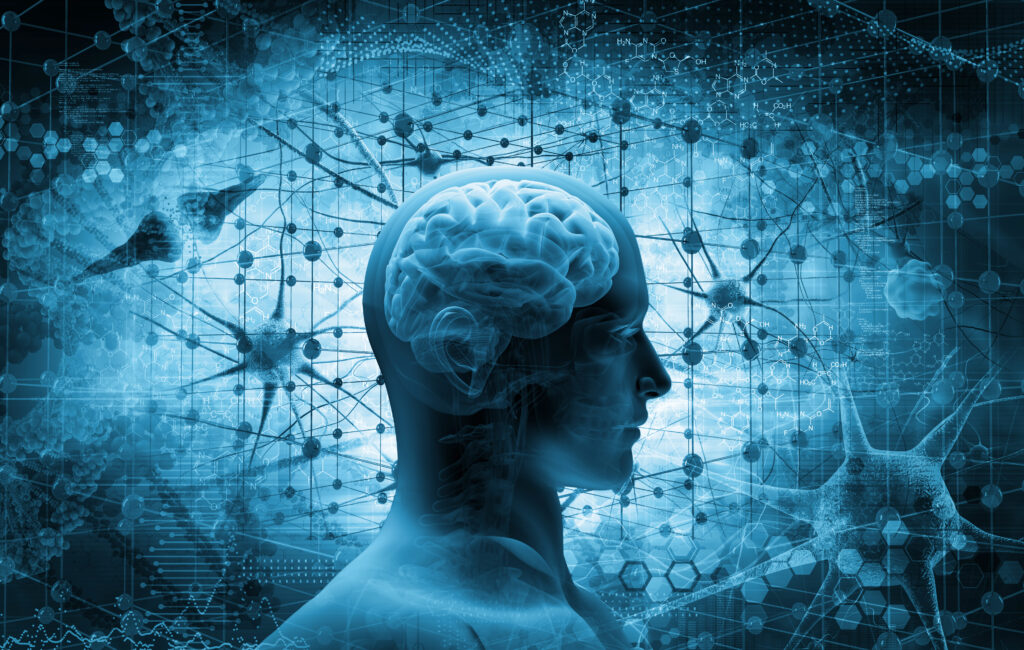
Consciousness can be disrupted by several factors, many of which directly impact the brain’s structural integrity or its ability to communicate internally. Some common causes of disrupted brain awareness include:
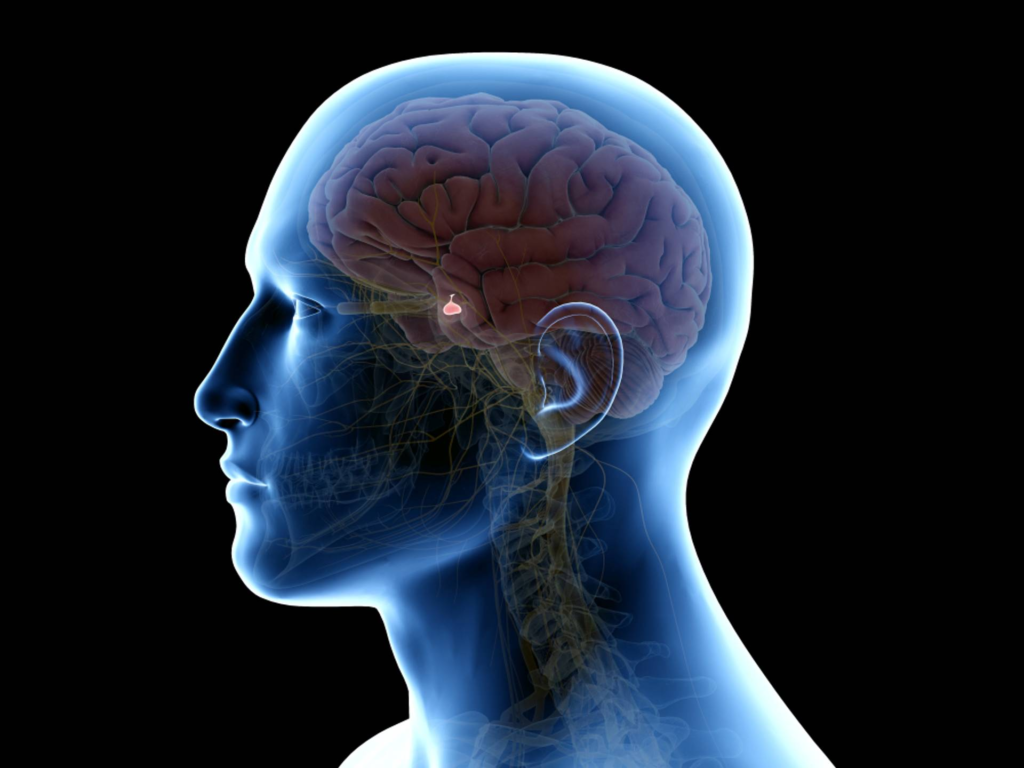
The thalamus is central to maintaining consciousness, primarily because it serves as a relay center for sensory information. It processes data from the outside world and sends it to the cerebral cortex for further refinement. In this way, the thalamus acts as a critical gatekeeper, determining what sensory information reaches conscious awareness.
Research has shown that damage to the thalamus, whether due to stroke, trauma, or tumors, can lead to a severe loss of consciousness. Patients may experience prolonged states of unconsciousness, such as comas or vegetative states. Additionally, the thalamus’s role in regulating sleep-wake cycles further underscores its importance in consciousness.
Brain injuries can significantly impair consciousness, depending on the severity and location of the damage. For example:
Injuries to the thalamus, brainstem, or cortex can have profound effects on awareness. In cases of severe injury, rehabilitation and recovery can be a long and challenging process.
Perception, the ability to interpret and make sense of sensory input, is a key element of consciousness. The parietal lobe, located in the cerebral cortex, is primarily responsible for processing sensory information related to touch, taste, and temperature. It integrates sensory input with motor responses, allowing us to interact with our environment.
Additionally, the occipital lobe is responsible for visual perception, while the temporal lobe handles auditory information. Together, these brain regions allow us to form coherent perceptions of the world around us, contributing to conscious awareness.
The formation of consciousness is a complex process that involves the integration of sensory input, cognitive functions, and emotional processing. Consciousness emerges from the interactions of different brain regions, and scientists believe that it is not just one part of the brain that is responsible for this phenomenon.
The global workspace theory posits that consciousness arises from the brain’s ability to integrate information from different regions into a unified “workspace.” This process is believed to involve the prefrontal cortex, thalamus, and parietal cortex, among others.
In this model, consciousness is not a static process but a dynamic one, constantly shifting as the brain integrates new sensory information and processes past experiences.
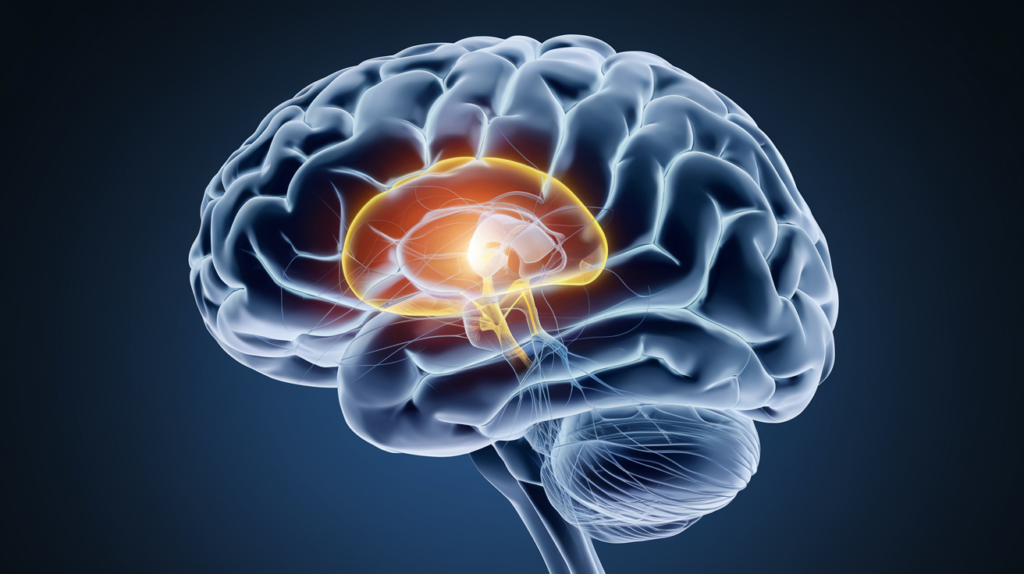
Wakefulness is an essential component of consciousness and is regulated by the reticular activating system (RAS) in the brainstem. The RAS works closely with the hypothalamus and thalamus to regulate sleep-wake cycles and ensure that the brain remains alert and responsive during the day.
When the RAS is functioning properly, individuals can maintain wakefulness and attentiveness. However, damage to the RAS or the brainstem can lead to disorders of consciousness, such as comas or persistent vegetative states.
Attention and focus are critical components of conscious awareness. The prefrontal cortex and parietal lobe play significant roles in directing attention and focus, allowing individuals to filter out distractions and concentrate on important tasks.
Additionally, the anterior cingulate cortex (ACC) helps regulate attention by detecting errors and maintaining sustained focus on tasks. Disruptions to these areas, such as in cases of traumatic brain injury or attention deficit disorders, can lead to challenges with concentration and sustained focus.
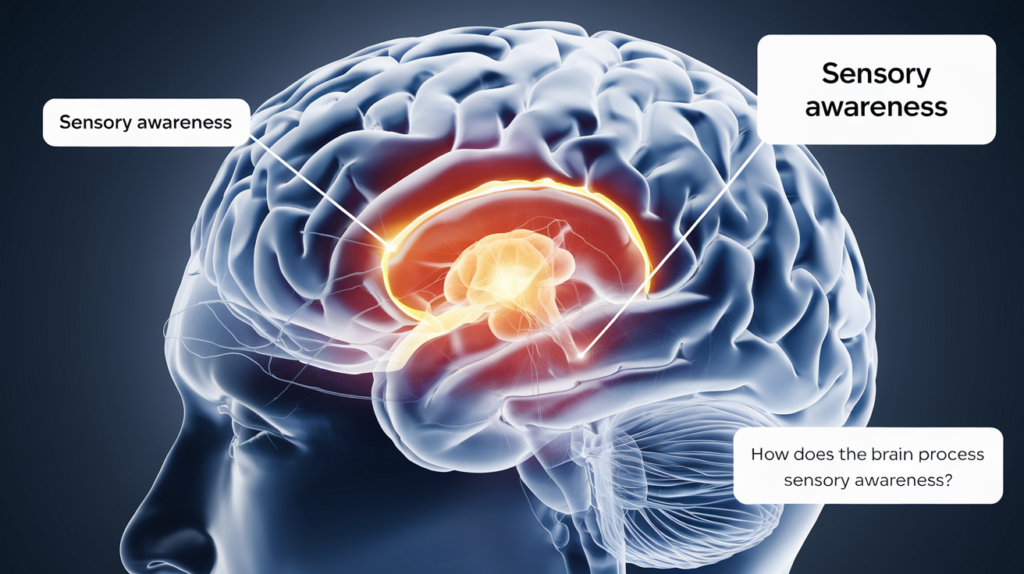
Sensory awareness—the brain’s ability to process and respond to information from the environment—is handled by several different regions:
These sensory inputs are integrated with cognitive processes, such as memory and decision-making, to form conscious awareness. This allows individuals to make sense of the world around them and interact with their surroundings in a meaningful way.
The brain’s ability to recover consciousness after injury depends on several factors, including the extent of the damage and the brain’s plasticity—its ability to form new connections and reorganize itself after injury. In cases of mild injury, such as concussions, full recovery is often possible within weeks or months.
However, in more severe cases, such as those involving damage to the thalamus or brainstem, recovery may be limited. Patients may remain in prolonged states of unconsciousness, such as comas or minimally conscious states. Rehabilitation plays a crucial role in helping individuals regain consciousness and cognitive function after brain injuries.
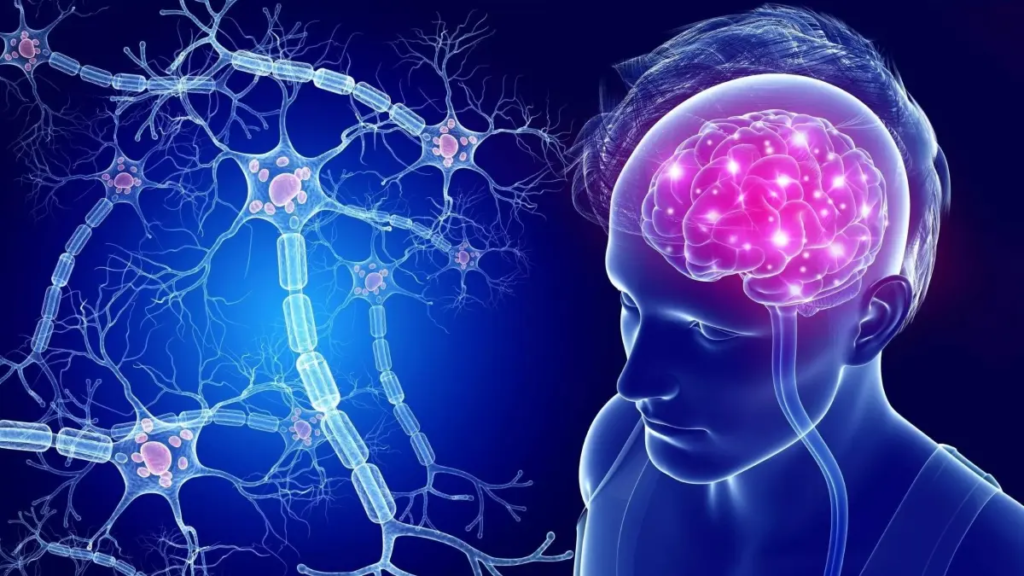
Yes, brain damage can significantly alter awareness, depending on the location and severity of the injury. Damage to the cerebral cortex, thalamus, or brainstem can lead to conditions such as comas, vegetative states, or minimally conscious states, where individuals experience impaired or absent awareness.
In some cases, individuals may recover partial or full awareness over time, while in others, the damage may result in permanent deficits.
In summary, the question which region of the brain is necessary for consciousness? highlights the complexity of human cognition and perception. While consciousness is not localized to one specific brain region, critical areas like the cerebral cortex, thalamus, and brainstem play pivotal roles in maintaining awareness, attention, and wakefulness.
By integrating sensory information, cognitive processes, and emotional experiences, these regions allow us to perceive the world, make decisions, and engage with our surroundings. Although brain damage or injury can disrupt consciousness, the brain’s ability to recover through neuroplasticity offers hope for individuals facing challenges in regaining awareness.
Understanding how these regions work together not only deepens our appreciation for the brain’s complexity but also opens the door to new treatments and therapies for disorders of consciousness.